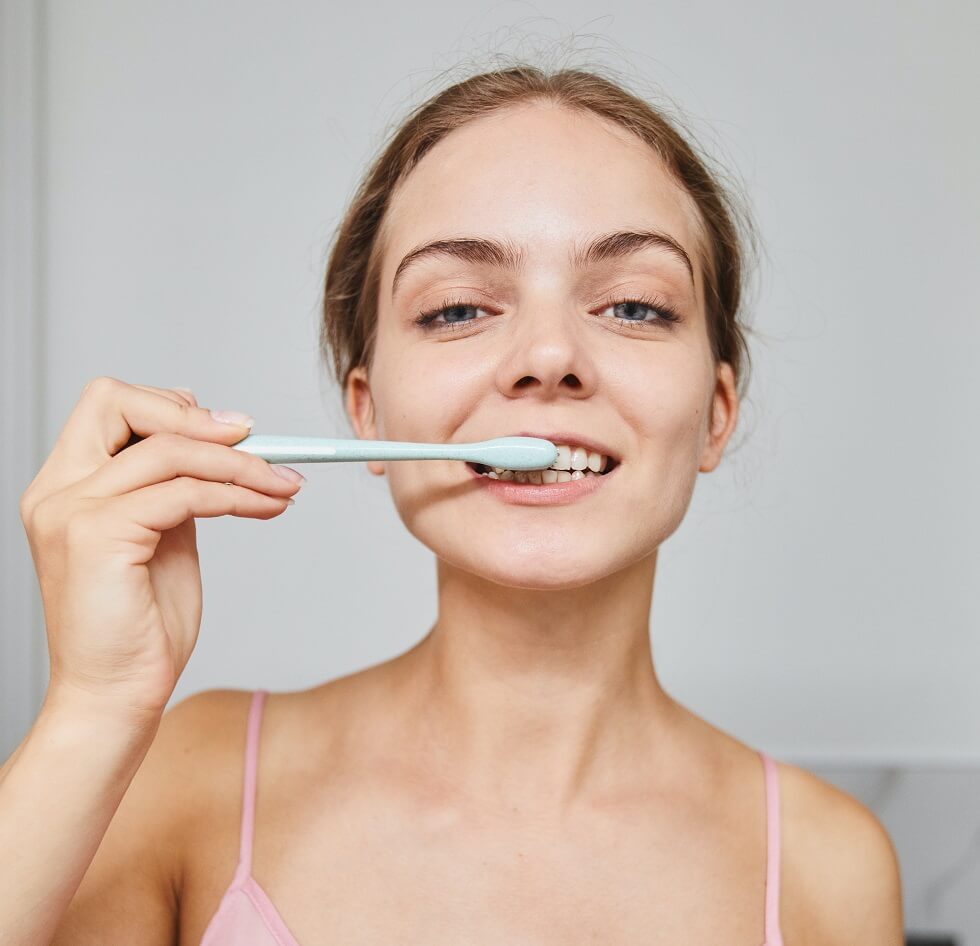Whiter teeth are a sign of health and good hygiene, so it’s no surprise how many people strive for a brighter smile. Some even go through cosmetic dentistry procedures and pay thousands to replace their natural teeth with sparkling white veneers. Luckily, you don’t have to go that far to obtain a whiter and brighter smile.
Whether you’re getting ready for a day full of photo-ops or want to feel more confident about your teeth in your everyday life, there are several tried-and-true ways to achieve a brighter smile, both at home and professionally — all while avoiding sensitivity. In this guide, we’ll outline all the major ways you can get rid of yellow teeth and make your smile sparkle.
Teeth whitening kits
You can buy teeth whitening kits at grocery and convenience stores, which come in a few forms. The most popular is the whitening strip, a thin, flexible piece of plastic coated in a whitening gel. You wrap the strips around your teeth and let them sit for a specified amount of time. The whitening gel usually contains hydrogen peroxide or carbamide peroxide, an ingredient made from a combination of hydrogen peroxide and urea. Both can penetrate through the teeth’s surface layers to bleach away all sorts of stains and get rid of any yellow tint.
Other commercial whitening kits may include a brush-on gel, teeth trays, or pens. These products usually use the same active ingredients, so the major difference to consider is your comfort level. Even the LED light kits, as sci-fi as they seem, rely on hydrogen or carbamide peroxide — the light just speeds up the chemical reaction that lightens the teeth.
Whatever whitening product you choose, follow the instructions that come with it. If you’re unsure about using it correctly or experiencing sensitivity when you do, give your dentist a call.
Professional whitening services
Most dentists offer teeth whitening services if you prefer to get whitening done professionally. Treatments can vary, but dentists often use the same methods and ingredients in at-home whitening kits.
Light-activated treatments are one of the most popular professional whitening methods. The dentist will apply a hydrogen peroxide or carbamide peroxide gel to your teeth, then let the gel sit for some time while shining a blue or UV light on your teeth to speed up the bleaching process.
Professional whitening services usually take about an hour and may be done in multiple sessions. The cost can vary, but it’s generally more expensive than at-home kits. But for some, having the assurance of a professional application is worth it.
DIY ways to whiten teeth
If you don’t want to shell out for a teeth whitening kit or professional services, the good news is that there are several natural remedies to resolving tooth stains. You might not see results as quickly, but these methods can be effective in the long term.
Baking soda paste
Many studies have found baking soda to be an effective stain-removal tool for teeth. Baking soda’s gritty texture is abrasive enough to remove stains but not so abrasive that it’s likely to damage your teeth. Additionally, because it’s alkaline, it helps regulate the acidity of your mouth, which can protect the enamel on your teeth.
You can use toothpaste that already contains baking soda or make a paste out of baking soda and a bit of water. Then, before brushing your teeth with proper toothpaste a few times a week, you can first brush with the baking soda and water mixture.
Hydrogen peroxide rinse
Hydrogen peroxide is a potent bleaching agent when used as a gel, but it’s also effective when used as a daily rinse.
To use hydrogen peroxide safely, dilute it so that your final solution has 1.5% hydrogen peroxide. That means that if you have 3% hydrogen peroxide, you’ll need to mix it 1:1 with water, but if you have 6% hydrogen peroxide, you’ll need to mix it 1:3. To use, swish the solution in your mouth once a day for around 30 seconds, either before or after brushing your teeth, then spit it out.
Unlike teeth whitening gels, hydrogen peroxide is a liquid. It swishes around everywhere instead of staying close to your teeth, as a gel would. This means it’s slightly more likely to irritate the gums. Also, the short exposure time of a rinse implies that the results won’t be as dramatic as what you might see with whitening strips. Even so, it’s an easy and affordable method, and many users see whiter teeth after a few weeks.
How to keep your teeth white

Getting rid of tooth stains is one thing, but prevention can be equally helpful. These oral hygiene tips will help prevent yellowing and staining to keep your teeth looking white for years to come.
Brush up
Before worrying about anything else, be sure you’re covering your bases by brushing twice daily for two minutes each time. This can eliminate the root cause of yellowed teeth: plaque buildup and staining.
Choose a toothpaste that will eliminate surface stains with the help of baking soda or hydrogen peroxide. Use a soft toothbrush to prevent damaging your enamel or gums. When you brush, focus on buffing each tooth individually with gentle, circular motions. Avoid any harsh back-and-forth movements or excessive pressure.
If you’re using toothpaste with fluoride or for sensitive teeth, don’t rinse your mouth with water when you’re done. Instead, just spit out as much of the toothpaste as you can. The residue that’s left behind will help to keep your teeth stronger.
Finally, don’t forget to floss. Although you can’t easily see in between your teeth, this is where plaque tends to build up, so floss before brushing daily.
Oil pulling
Oil pulling is an Ayurvedic oral care practice where the user swishes an oil in their mouth for five to 30 minutes, usually before brushing and flossing. The most popular oil for this is coconut oil (due to its high concentration of antibacterial lauric acid), but many other oils can work as well.
Oil pulling may help keep your teeth white by reducing the levels of certain bacteria in the mouth that can cause yellowing. For example, one study found that coconut oil significantly reduced the presence of one of the top types of bacteria that cause plaque and gingivitis (Streptococcus mutans), after two weeks of daily swishing. That said, there isn’t much evidence to prove that it removes existing stains, so it may be best as a preventative practice.
To try oil pulling, melt a bit of coconut oil on low heat (or place the solid in your mouth and let it melt from the heat of your body), and then swish it around in your mouth for up to 30 minutes. Finally, spit it out, and follow it up with the rest of your oral hygiene routine.
Maintain a healthy diet and lifestyle
Drinking water and staying hydrated is important for overall health. But, when you drink water throughout the day, that water also dislodges food particles and bacteria that coat the teeth. Drinking water frequently can keep your mouth clean and prevent plaque buildup and staining from foods or other beverages.
You can also try to limit any foods, beverages, and practices that stain the teeth. Coffee, red wine, black tea, and cigarettes are all known as teeth stainers.
Get regular dental cleanings
With dental insurance, most dentists offer a free cleaning once or twice per year. This is when dental professionals manually clean plaque buildup from your teeth and polish them. These check-ups are important for dental health and can keep your teeth bright in the long term.
Say cheese for a whiter smile
A combination of preventative and whitening methods can give you a gleaming, movie-star grin. A healthy diet and lifestyle and a daily oral hygiene routine are key for stain and plaque prevention. Think about oral hygiene as part of your larger wellness routine.
To reverse existing stains, ingredients like hydrogen peroxide, hydrogen carbamide, and baking soda can all do the trick. Professional services and at-home whitening kits will yield the quickest results, but DIY rinses and pastes can also whiten your teeth over time.





